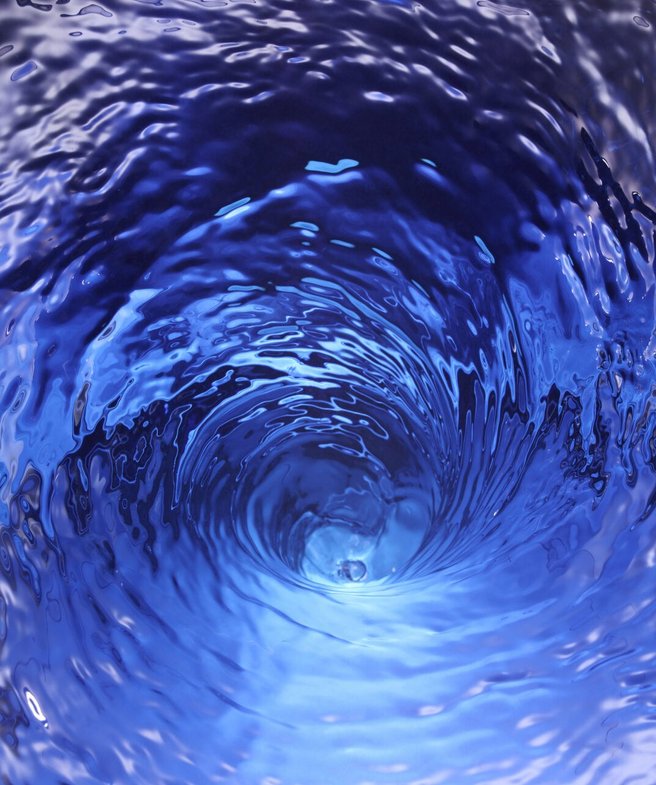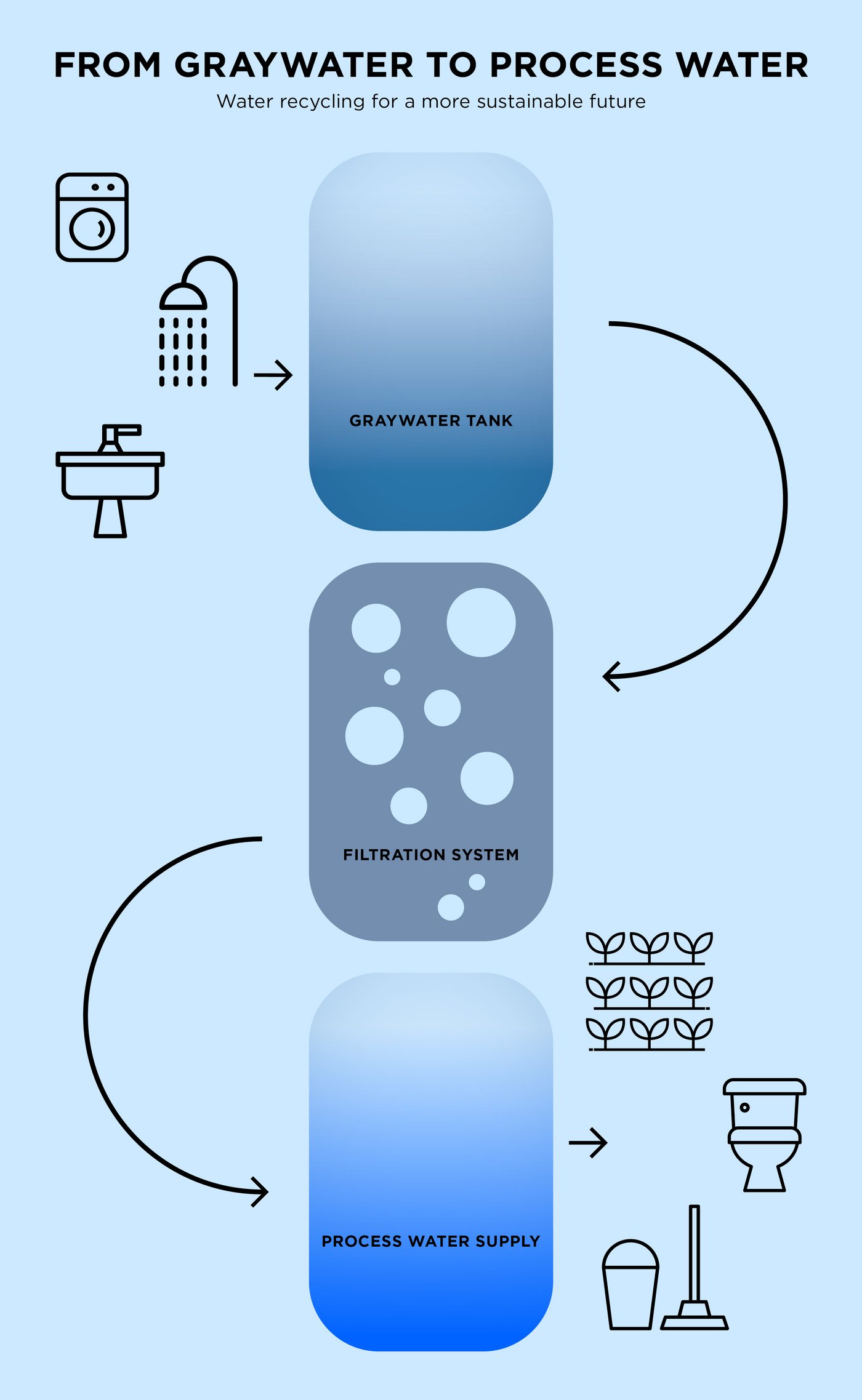DOWN THE DRAIN? SECOND CHANCES FOR USED WATER.

You may not want to drink the glass of water that’s been sitting around since last night, but it’s certainly good enough for one of your houseplants. The re-use of water on a small scale is nothing new. On a larger scale, however, the recycling of water is still not very common. Fresh water is becoming increasingly scarce and thus more precious. But there’s something to be done about it. A considerable amount of the water we use doesn’t have to flow directly into the sewage system.
Water from sinks, baths, showers and washing machines can be treated and – known as graywater – used for other purposes such as flushing toilets, cleaning buildings or watering plants. To achieve this, the water from the sink or shower flows through separate pipes into a graywater tank, where the water is filtered.
For individual private households, it is difficult to operate a graywater system economically using current technology. Networked systems could be a possible solution, for instance by means of central filtration systems in apartment buildings or by connecting entire housing developments to a municipal treatment plant. Just such a municipal system is currently being planned in Hamburg, for instance.

The prerequisite is that the water is only slightly dirtied during its first use and is sufficiently treated before being used a second time. It can be cleansed using membrane filters, UV exposure or the use of microorganisms.
After being filtered, the water is stored in a special tank, ready to be re-used. Depending on the quality of the filtration, the water is good for different purposes.
For companies and municipalities, the use of graywater can be particularly worthwhile where a high consumption of fresh water coincides with a high consumption of service water. Hotels, outdoor swimming pools, student dormitories and office buildings, by supplying their used fresh water for graywater treatment, can significantly reduce water wastage.
The biggest obstacle to retrofitting graywater systems in existing buildings is the high initial outlays, particularly the need to install a parallel pipe system. In contrast, for new buildings with high water needs, amortization is possible after just a few years.
It makes sense to prepare for more frequent droughts, particularly in drier regions such as southern Europe. But fresh water is also becoming scarcer in other regions as well.